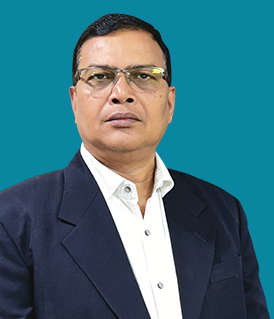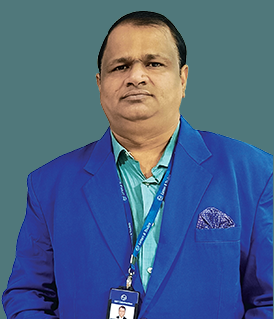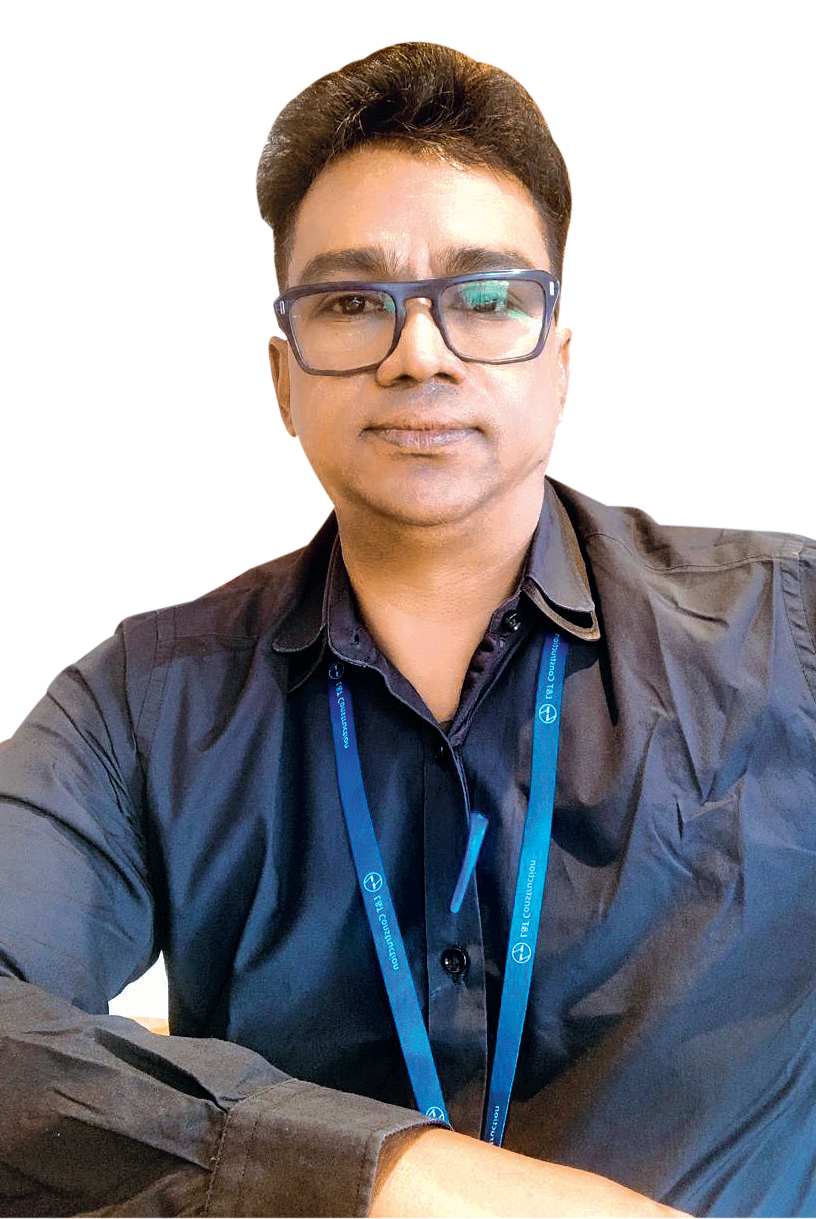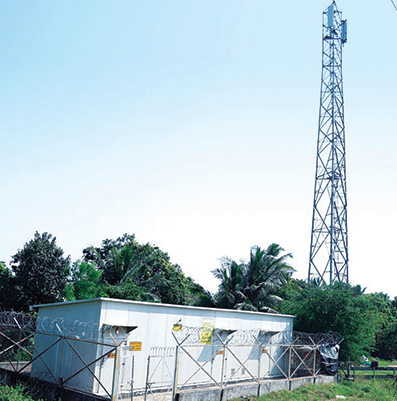
Setting EHS benchmarks. 8 years. No LTI.
WDFC STP 17

Outdoor signalling systems
India has the world’s largest railway network spanning close to 70,000 km (as of March 2023), and as thousands and thousands of trains speedily crisscross the length and breadth of the country every day, signalling is critical for their safe operation. L&T has been given a huge responsibility to construct a one-of-its-kind Signalling & Telecom (S&T) project, the STP 17 Package for the Western Dedicated Freight Corridor (WDFC), and even as Project Director Srimanta Das drives his team to keep his project on track, he is equally mindful, along with his SHE Director, Bikash Kumar Panigrahi, that EHS has to remain their top priority. That it is, is borne out by the fact that 8 years on, the project has not had a single LTI and, in the process, has won L&T Construction’s Safety Award for 2024.
The team’s mandate is to construct S&T for a 422 Rkm stretch of double line railway track involving train detection systems, electronic interlocking in stations, automatic signalling in block sections, train monitoring and diagnostic systems, fibre optic communications, and GSM( R ) system from New Makarpura (Vadodara) to JNPT, which will feature 13 stations, 13 block sections (including 86 auto location huts/telecom huts), and 87 GSM‑R towers..
“Our project will soon be playing a crucial role in the country’s infrastructure development, particularly in the railway sector,” says Srimanta, alluding to a larger purpose. “Apart from focusing on project efficiency and performance, it is equally essential, therefore, to understand the importance of environmental health and safety considerations and accordingly address the concerns of all our stakeholders.”

![]()
Our project will soon be playing a crucial role in the country’s infrastructure development, particularly in the railway sector. Appreciating the importance of Safety throughout the project lifecycle, we ensure strict adherence to safety protocols, continuously monitoring and regularly training our workers.
Srimanta Das
Project Director
![]()
Driving Mission Zero Harm
“Appreciating the importance of Safety throughout the project lifecycle, we ensure strict adherence to safety protocols, continuously monitoring and regularly training our workers,” highlights Srimanta, whose primary concern is that they are constructing in proximity to the busy Mumbai– Ahmedabad railway corridor. Maintaining open communication channels and quickly adapting to challenges have held the team in good stead. The result is that the project has thus far clocked 4.5 million safe manhours without LTI, which is particularly pleasing to Bikash. “It is primarily because of our emphasis on teamwork, reinforcing that safety is a shared responsibility and a collective priority, helping us anticipate potential issues and address them proactively.” Real-time data collection, predictive analytics, and monitoring systems are further strengthening the team’s effort to identify potential hazards early and act quickly and decisively.
![]()
It is primarily because of our emphasis on teamwork, reinforcing that safety is a shared responsibility and a collective priority, that are helping us to anticipate potential issues and address them proactively.
Bikash Kumar Panigrahi
SHE Director
![]()

Learning from their mistakes, incidents, and near misses is just as important for Bikash and his team in their journey to maintain Mission Zero Harm, enabling them to make continuous improvements to processes, protocols, and training. “As empowerment creates a sense of ownership, we encourage workers to speak up about safety risks,” he reminds.

Operational Control Centre (OCC) for Western Dedicated Freight Corridor, Ahmedabad
A key to their EHS success is the implementation of several initiatives to drive Mission Zero Harm:
- Implementing Railways SBG’s Life-Saving Rules (LSR) and a Zero Tolerance Policy across the project with awareness campaigns to instil these principles
- Consistently achieving 85% in the Quarterly Audit Ratings, as a platform to benchmark EHS performance and drive continuous improvement
- Adopting Indian Railways Protocols to safeguard the workforce while working in proximity to active railway lines
- Mitigating risks associated with work at height by conducting regular acrophobia tests & medial assessments. On the medical side, implementing primary & secondary fall protection & arrest systems, during erection of the GSM tower
- Continuously developing workers’ skills and knowledge about safety and EHS practices, and providing regular training in the areas of risk assessment, safety protocols, work from height, stress management, etc.
Towards maintaining a Zero Incident environment
Building workmen competency: Timely & quality delivery, safe working manhours, and a Zero Incident environment are largely dependent on skilled project execution for which competent workers is an imperative, especially in challenging terrains, like railway electrification. Senior Accident Prevention Officer, Vimal Kumar Tiwari’s strength is his ability to build workmen competency, particularly through practical, on-the-job training and his innovative approach to safety education, including case study–based awareness programmes, has had a significant impact on the project’s safety culture.
Living his values

One of Paritosh’s significant achievements is to have been part of the team that helped L&T being recognized as a ‘Great Place to Work’, which reflects the strong organizational values he is proud to uphold. Based in Bhubaneswar, Odisha, he treasures his time with his wife, Priyanka Das, and their son, Jatin Kumar Das, while outside of work; he is passionate about seeking intellectual growth.
Paritosh Chandra Das
Chief Accident Prevention Officer

“The staff and workers are sensitized to critical safety aspects, specific to their roles,” Vimal notes wisely, “and through the Workmen Contact Programme, we have tailored training modules addressing unique safety challenges, which have been extended to worker camps too for greater engagement.” Encouraging open dialogues, empowering the workforce, and creating a culture of collaboration & safety have ensured that workers play an active role in maintaining a secure work environment. Leading by example, Vimal’s active engagement in EHS walkdowns and inspections at project locations, alongside the execution team, has helped him develop good interpersonal skills, build strong relationships and engage in open dialogue with all the stakeholders.

Auto Location Hut with GSM‑R Tower
Efficient subcontractor management: By clearly articulating safety requirements at the start of the project followed by regular reviews, and prioritizing accountability and performance, Chief Accident Prevention Officer, Paritosh Chandra Das, has fostered a culture of safety and compliance among the subcontractors. “The introduction of onsite inspections, audits and a structured reward & penalty system have motivated the subcontractors to consistently meet our safety expectations,” he shares with a flourish. “To resolve customer-level observations, collaborating with the execution team and winning their trust is important, which has helped me to successfully conduct monthly audits, and these audit scores stand testimony to the strength of our EHS management system and our shared focus on safety excellence across all stakeholders.”
Deftly handling multiple stakeholder groups: Another of Srimanta’s success is his deft and careful management of multiple stakeholder groups involved in the project including contractors, the Indian Railways, clients, and of course the local population across two states. The Monthly Audit Rating Scores (MARS) and Monthly Electrical Safety Audits (MESA), in partnership with the client, is throwing up excellent audit scores, reflecting the team’s robust implementation of the EHS management system.
Fostering a culture of continuous improvement

Vimal proactively drives widespread adoption of the Life Saving Rules and Zero Tolerance Policy, encourages the use of STARRT (Safety Task Analysis Risk Reduction Talk) cards, to identify potential hazards and take pre-emptive measures to mitigate risks. Stand-down meetings and sharing the learnings from incidents help the team to pause, reflect, and collectively review processes and foster a culture of continuous improvement. Hailing from Pratapgarh, Uttar Pradesh, Vimal is married to Manisha Tiwari and blessed with two children, Master Pranjal Tiwari and daughter Arya Tiwari.
Vimal Kumar Tiwari
Senior Accident Prevention Officer

Accolades for a job well done
By keeping EHS management as their top priority, the STP 17 project team has achieved an ISO certification and won a spate of international and national awards for their EHS performance. Bikash proudly reels them off: “We have won 2 International Safety Awards from the British Safety Council (BSC), 3 RoSPA Awards, and 1 National Safety Council Award. And yes, this Safety Award is the icing on the cake!” he gushes.
Not surprisingly, Srimanta is equally buoyant about their spotless EHS record despite the inherent and many challenges. “Safety is not an option but a wilful choice to ensure the highest productivity along with the safety of a person and the wellbeing of his/her family. What’s helping us in our endeavour are clear and precise communication and continuous feedback from all stakeholders,” he signs off encouragingly.